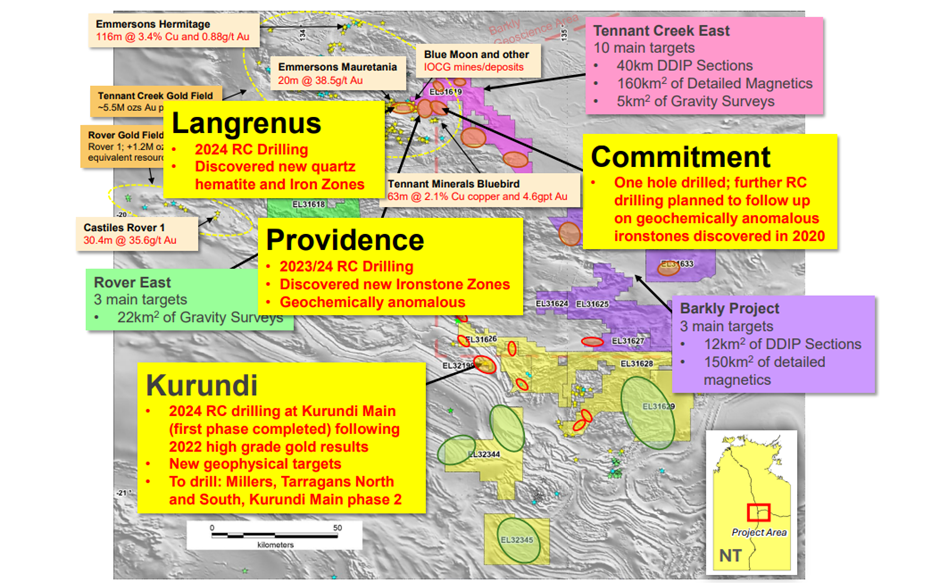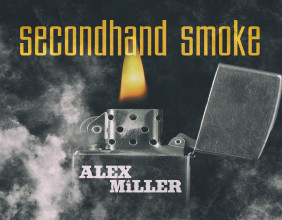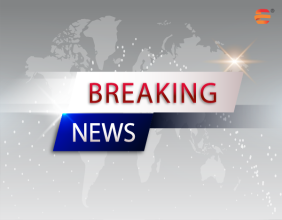Highlights
- Last year, KRR allocated AU$2 million for drilling to follow up on targets from the 2023 geophysics program.
- KRR has completed 68 RC holes, totaling 7,998 metres, mainly at Tennant Creek East.
- Geophysical surveys at Tarragans and Millers revealed promising gold targets for further drilling.
- KRR plans to drill 12 reverse circulation (RC) holes, totaling approximately 600 metres, to test newly identified targets at Tarragans.
- Additional drilling phases will be carried out at other project areas throughout the year as the interpretation of the 2023 geophysical results progresses.
Australian gold explorer King River Resources Ltd (ASX:KRR) continues to advance its exploration program in the Tennant Creek region for the year. The company has outlined new geophysical targets and planned reverse circulation (RC) drilling at regional prospects surrounding the Kurundi project.
Last year, KRR allocated an AU$2 million budget specifically for drilling to follow up on targets identified through an extensive 2023 geophysics program. This budget was dedicated to key areas including the Tennant Creek East, Rover East, Kurundi, and Barkly Projects. These locations are positioned along geophysical and geological trends that are known to be associated with high-grade copper and gold deposits, such as those found at Rover, Bluebird, and Mauretania.
- KRR has drilled 68 reverse circulation (RC) holes, totaling 7,998 metres, with most of this drilling focused on the Tennant Creek East Project Area.
- Several new ironstone zones and structures have been discovered, and plans are underway for follow-up drilling.
- Drilling has also started at the Kurundi Project Area, located 80 km southeast of Tennant Creek. The initial phase at the Kurundi main prospect, where RC drilling in 2022 revealed several high-grade gold intersections, has been completed.
- The rig is now being relocated to evaluate new 2023 geophysical targets at additional unexplored prospects within the broader Kurundi region. This includes Tarragans, where the highest-grade gold rock chip result of 23.93 g/t Au was previously obtained.
- Additional drilling phases will be carried out at other project areas throughout the year as the interpretation of the 2023 geophysical results progresses.

Image source: Company update
Image description: KRR Tennant Creek tenements and projects with prospects drilled so far and 2023 Geoophysics survey summary
KRR has planned new geophysical targets and drilling at Tarragans and Millers
Geophysical Surveys Reveal Promising Gold Structures at TarragansBottom of Form
Tarragans is located 30km southeast of Kurundi Main and directly southeast of the Kurinelli Gold Field. As part of the 2023 geophysical program, KRR conducted GAIP and drone magnetics surveys over the two primary target areas at Tarragans: Tarragans South and Tarragans Northeast. These surveys are designed to refine targeting based on gold results from previous rock chip sampling during the company’s reconnaissance exploration.
- At Tarragans South, high-grade gold results from historical workings included impressive grades of 23.93 g/t Au, 9.28 g/t Au, and 5.72 g/t Au from a sub-vertical fault zone with quartz veining and significant iron alteration. The new GAIP results indicate this gold-bearing structure extends further to the east, suggesting additional exploration potential.
- The northern target area is situated near a historical alluvial gold prospect known as Mick and Petas. The GAIP and drone surveys have revealed structural trends linked to gold anomalies in this region. KRR plans to drill 12 reverse circulation (RC) holes, totaling approximately 600m, to test these newly identified targets.
Promising Gold Anomalies Identified at Millers Area
Located 20 km northwest of Kurundi Main, the Millers area has shown promising results from previous exploration efforts. The best rock chip sample yielded 5.03 g/t Au, and a significant fault-related hematite-magnetite ironstone was identified, with anomalous geochemical values including 0.18 g/t Au.
- A DDIP geophysical survey detected two resistivity and chargeability anomalies beneath the new ironstone target. Additionally, a GAIP survey revealed a coincident anomaly associated with a strong fault and veining zone, where 2022 sampling returned 0.35 g/t Au.
KRR plans to drill 6 holes totaling 700 meters to test these anomalies. Further drilling will be guided by the ongoing interpretation of 2023 geophysical results, with 13,500 metres of RC drilling allocated for targets at Millers, Tarragans, Kuiper, and Rover East.
KRR shares traded at AU$0.011 at the time of writing on 22 August 2024.





